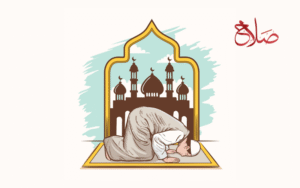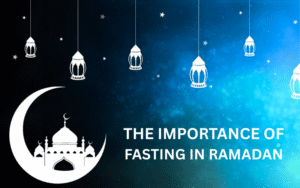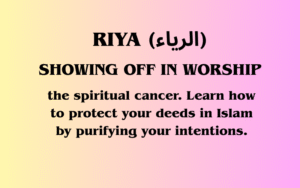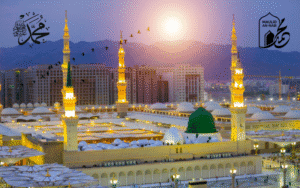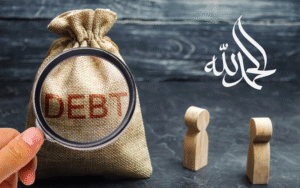The Complete Guide to Hajj Rituals: Virtues, Types & Mistakes
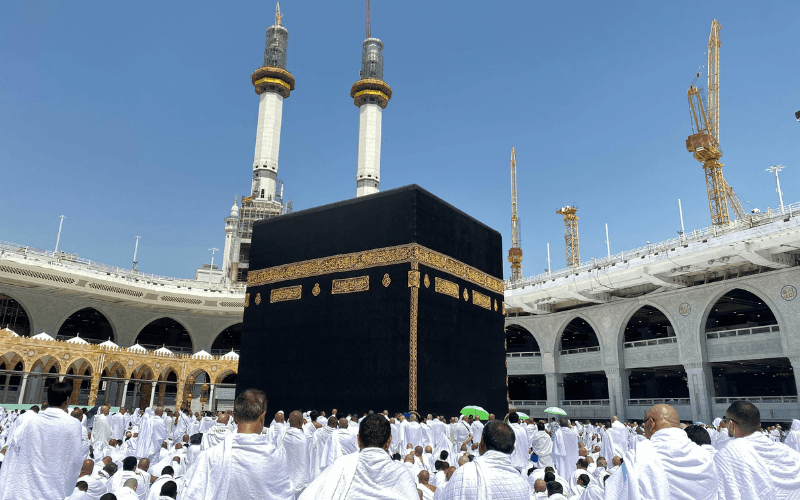
Hajj is one of the five main pillars of Islam. It is a physical and financial act of worship (ibadah), obligatory (Fard) once in a lifetime for every capable Muslim. Furthermore, Hajj is a form of worship that brings a servant closer to Allah and inspires the entire Muslim Ummah (community) to unite under one banner. The hajj rituals are profound, its importance is immense, and its virtues are limitless.
In this article, we will discuss in detail the importance of the holy Hajj, its innumerable virtues, the primary goals and objectives of Hajj, the different types of Hajj, the day-by-day rituals, the means of achieving a ‘Hajj Mabrur’ (an accepted Hajj), and finally, the various common mistakes and innovations (Bid’ah) prevalent in its observance.
The Importance of Hajj in the Light of the Quran
Just like Salah (prayer), Sawm (fasting), and Zakat (charity), Hajj is obligatory for those who are able. Allah Ta’ala says:
وَلِلَّهِ عَلَى النَّاسِ حِجُّ الْبَيْتِ مَنِ اسْتَطَاعَ إِلَيْهِ سَبِيلاً وَمَنْ كَفَرَ فَإِنَّ اللهَ غَنِيٌّ عَنِ الْعَالَمِينَ
‘And [due] to Allah from the people is a pilgrimage to the House – for whoever is able to find thereto a way. But whoever disbelieves – then indeed, Allah is free from need of the worlds.’
(Surah Aal-Imran 3:97).
This is the primary evidence for the obligation of Hajj. In addition, Allah Ta’ala also says:
وَأَتِمُّوا الْحَجَّ وَالْعُمْرَةَ لِلَّهِ
‘And complete the Hajj and ‘Umrah for Allah’
(Surah Al-Baqarah 2:196).
The importance of this worship is so great that Allah issues a severe warning against those who abandon Hajj despite having the means.
The Significance of Hajj According to Hadith
Hajj is one of the five pillars upon which Islam is built. The Messenger of Allah (pbuh) said:
‘Islam is built upon five (pillars): … (4) Performing Hajj, and (5) Fasting in Ramadan.’ (Sahih al-Bukhari 8, Sahih Muslim 16)
The Prophet (pbuh) also said:
‘O people! Allah has prescribed Hajj upon you, so perform Hajj.’
(Sahih Muslim 1337)
This worship is obligatory only once in a lifetime. For instance, when Aqra’ bin Habis (RA) asked, ‘O Messenger of Allah! Is Hajj obligatory every year or only once in a lifetime?’ He replied:
‘No, rather Hajj is obligatory once in a lifetime. Whoever does more, it is voluntary (Nafl) for him.’
(Sunan Abi Dawud 1721, Sunan an-Nasa’i 2619)
The Prophet (pbuh) instructed those with the ability to perform Hajj promptly. He said:
‘Whoever intends to perform Hajj, let him hasten to do so. For he may fall sick, his means of transport may be lost, or he may be faced with some other need.’
(Sunan Ibn Majah 2883)
The Unparalleled Virtues and Rewards of Hajj
Hajj is one of the best righteous deeds on Earth. Through it, a servant not only attains closeness to Allah but is also blessed with countless rewards. Indeed, these Hajj benefits are both spiritual and worldly.
1. Sinless as a Newborn:
The Messenger of Allah (pbuh) said:
‘Whoever performs Hajj for Allah’s pleasure and does not have sexual relations or commit sin, will return (after Hajj free from all sins) as if he were born anew.’
(Sahih al-Bukhari 1521)
2. The Only Reward is Jannah (Paradise):
The reward for an accepted Hajj is nothing but Jannah. The Prophet (pbuh) said:
‘One ‘Umrah to another is an expiation for the sins committed in between. And the reward for Hajj Mabrur (an accepted Hajj) is nothing but Jannah.’
(Sahih al-Bukhari 1773, Sahih Muslim 1349)
3. Removes Poverty and Sins:
Many delay Hajj fearing poverty, yet Hajj removes poverty. Specifically, the Prophet (pbuh) said:
‘Follow up between Hajj and ‘Umrah, for they remove poverty and sins just as the bellows removes impurities from iron, gold, and silver.’
(Jami` at-Tirmidhi 810, Sunan an-Nasa’i 2631)
4. The Best Jihad:
For women, the older adults, children, and the weak, the Prophet (pbuh) described Hajj as the best form of Jihad. For example, when Aisha (RA) asked the Prophet (pbuh) about Jihad, he said:
‘For you (women), the best and most excellent Jihad is Hajj, a Hajj Mabrur.’
(Sahih al-Bukhari 1520)
5. One of the Best Deeds:
Someone asked the Prophet (pbuh), ‘Which deed is the best?’ He said, ‘To believe in Allah and His Messenger.’ He was asked, ‘Then what?’ He said, ‘To perform Jihad in the cause of Allah.’ He was asked, ‘Then what?’ He said:
‘An accepted Hajj (Hajj Mabrur).’
(Sahih al-Bukhari 26)
6. The Pilgrims are the Guests of Allah:
Those who perform Hajj and ‘Umrah are the guests of Allah. The Prophet (pbuh) said:
‘The performers of Hajj and ‘Umrah are the delegation of Allah. If they call upon Him, He answers them. If they seek His forgiveness, He forgives them.’
(Sunan Ibn Majah 2892)
7. Separate Rewards for Every Act of Hajj:
- Talbiyah: When a pilgrim recites the Talbiyah, the stones, trees, and earth to his right and left recite it with him. (Jami` at-Tirmidhi 828)
- Tawaf (Circumambulation): For every step, Allah records one good deed, erases one sin, and raises his rank by one degree. Additionally, the two rak’ahs of prayer after Tawaf are equivalent to freeing a slave. (Sunan Ibn Majah 2956, Jami` at-Tirmidhi 959)
- Hajar al-Aswad (Black Stone) & Rukn al-Yamani (Yemeni Corner): Touching these two removes sins. The Prophet (pbuh) said:‘Allah will raise the Black Stone on the Day of Resurrection, and it will have two eyes… and it will testify in favor of whoever touched it in truth.’ (Jami` at-Tirmidhi 961)
- Water of Zamzam: It is not just water, but also nutritious food and a cure for illnesses. (Sahih Ibn Abi Shaybah, Mustadrak Hakim)
- Day of Arafah: The Prophet (pbuh) said:‘The best supplication is the supplication on the Day of Arafah.’ (Jami` at-Tirmidhi 3585)
- Moreover, on this day, Allah frees the most slaves from the Hellfire and boasts about the pilgrims to the angels. (Sahih Muslim 1348)
- Stoning the Jamarat: Every pebble thrown serves as an expiation for a destructive sin.
- Shaving the Head: For every hair, Allah records one good deed.
The Core Goals and Purpose Behind the Hajj Rituals
Hajj is not merely a set of rituals; rather, it has profound goals and objectives.
- Establishing Tawhid (Monotheism): The greatest objective of Hajj is the affirmation of Allah’s oneness. Through the Talbiyah, the pilgrim declares: ‘Here I am at Your service, You have no partner’ (Labbayka La Sharika Lak). Consequently, this echoes the call of Ibrahim (Abraham) (as), when he, by Allah’s command, said:‘Do not associate anything with Me, and purify My House for those who perform Tawaf…’ (Surah Al-Hajj 22:26).
- Spiritual Purification: Through Hajj, a servant achieves spiritual, moral, and ethical purity. In effect, it purifies a person from bad character and reprehensible qualities.
- Unity of the Muslim Ummah: Hajj is a practical manifestation of global Muslim brotherhood. Here, Muslims of different colors, languages, and ethnic groups from all corners of the world gather in one uniform, for one purpose. They get to know each other, advise one another, and thus demonstrate their strength as one Ummah.
- Acquiring Knowledge: Hajj is a great center for learning. For example, pilgrims have the opportunity to learn the rules of Deen (religion) and the specific hajj rituals from knowledgeable scholars in the precincts of the Ka’bah and Masjid an-Nabawi.
- Remembrance of the Hereafter: The unstitched white garments of Ihram remind one of the shroud (kafan). Similarly, the gathering of millions on the plain of Arafat is a reminder of the Day of Resurrection, making one detach from the world (dunya) and focus on the Hereafter (akhirah).
- Practice of Worship: During Hajj, pilgrims have the opportunity to abundantly perform good deeds such as Tawaf, Salah, Quran recitation, Tasbeeh, Tahleel, Dhikr (remembrance), and giving charity.
Understanding the Three Types of Hajj
There are three main types of Hajj. A pilgrim can choose any one of them based on their convenience:
- Hajj al-Tamattu: This is the easiest and the type the Prophet (pbuh) encouraged his companions to perform. In this Hajj, the pilgrim first enters Ihram from the Miqat for ‘Umrah only. Upon reaching Makkah, they perform ‘Umrah (Tawaf and Sa’i), then shave or shorten their hair and exit the state of Ihram (become halal). Then, on the 8th of Dhul Hijjah, they enter Ihram again, this time for Hajj, from their residence in Makkah and complete the remaining hajj rituals. As a result, a pilgrim performing Tamattu must offer a sacrifice (Damm or Hadi).
- Hajj al-Ifrad: The pilgrim enters Ihram from the Miqat for Hajj only. Upon reaching Makkah, they perform the ‘Tawaf al-Qudum’ (Arrival Tawaf) and remain in the state of Ihram until the rites of Hajj are completed (after the 10th of Dhul Hijjah). Therefore, a pilgrim performing Ifrad does not need to offer a sacrifice; it is optional.
- Hajj al-Qiran: The pilgrim enters Ihram from the Miqat for both Hajj and ‘Umrah simultaneously. Upon reaching Makkah, they perform ‘Umrah but do not exit the state of Ihram. They remain in Ihram, wait until the days of Hajj, and complete all the Hajj rituals before finally becoming halal. Likewise, a pilgrim performing Qiran must also offer a sacrifice.
How to Achieve ‘Hajj Mabrur’ (An Accepted Pilgrimage)
‘Hajj Mabrur’ is a Hajj that is free from sin and showing off (Riya), and is performed perfectly according to the Sunnah. To achieve such a Hajj, certain conditions are essential:
- Pure Intention (Ikhlas): The intention for Hajj must be solely for the pleasure of Allah. Otherwise, if a person performs Hajj to show off or to earn the title of ‘Haji,’ it will not be accepted.
- Halal Provision: All expenses for the Hajj journey must come from lawful (Halal) earnings. This is because Allah does not accept worship with Haram (unlawful) money.
- Strict Adherence to the Sunnah: A pilgrim must perform every act of the hajj rituals according to the method taught by the Prophet Muhammad (pbuh). Indeed, any form of innovation (Bid’ah) destroys the deed.
- Avoiding All Obscenity and Quarreling: Allah says:‘…whoever has new (Hajj) in these months, there is [to be for him] no sexual relations and no disobedience and no disputing during Hajj’ (Surah Al-Baqarah 2:197).
- Proper Preparation: A pilgrim must learn the rules, regulations, and rituals of Hajj correctly before departing.
- Abundant Supplication (Du’a): One should humbly pray to Allah for the acceptance of their Hajj and for it to be completed with ease.
Signs of an Accepted Hajj:
There are signs that indicate whether a Hajj has been accepted. For instance, scholars say the primary signs of a Hajj Mabrur are:
- Returning from Hajj with a positive change in one’s life; becoming more religious and a better person than before.
- Remaining steadfast on the true path (Deen) and not returning to past sins.
- Becoming detached from the world (dunya) and more inclined towards the Hereafter (akhirah).
- An increased interest in worship and maintaining consistency in good deeds.
Hajj Day-by-Day: Understanding the Hajj Rituals Step by Step
This section explains how to perform Hajj and its main hajj rituals, which span from the 8th to the 12th of Dhul Hijjah (or 13th for some). (Note: This is a brief outline for Hajj al-Tamattu):
- 8th Dhul Hijjah (Day of Tarwiyah):
- Enter Ihram for Hajj from your place of residence in Makkah.
- Proceed to Mina while reciting the Talbiyah.
- In Mina, pray Dhuhr, Asr, Maghrib, Isha, and the Fajr of the next day (9th). (It is Sunnah to shorten the 4-rak’ah prayers to 2, but pray each at its own time).
- 9th Dhul Hijjah (Day of Arafah):
- This is the main day of Hajj. First, after sunrise, depart from Mina for the plain of Arafat. Then, stay in Arafat from after midday (Zawal) until sunset (this is the core pillar of Hajj).
- Listen to the Khutbah (sermon) at Masjid Namirah and pray Dhuhr and Asr prayers combined and shortened (Jama’ and Qasr).
- Spend the time until sunset facing the Qiblah, engaged in Du’a (supplication), Dhikr (remembrance), and Istighfar (seeking forgiveness). Afterward, depart for Muzdalifah without praying Maghrib.
- Upon reaching Muzdalifah, pray Maghrib and Isha prayers combined and shortened (Jama’ and Qasr).
- Spend the night here and collect pebbles (the size of small chickpeas) for stoning the Jamarat.
- 10th Dhul Hijjah (Day of Nahr/Sacrifice):
- This is the busiest day of Hajj. First, pray Fajr in Muzdalifah and make Du’a at ‘Mash’ar al-Haram’ until just before sunrise.
- Next, after sunrise, depart for Mina.
- In Mina, stone only the ‘Jamarat al-Aqabah’ (the largest pillar) with 7 pebbles. Following that, perform the sacrifice (Hadi).
- Then, shave or shorten the hair (with this, the pilgrim enters the first stage of ‘tahallul’ or becoming halal, where everything is permissible except marital relations).
- Finally, go to Makkah to perform ‘Tawaf al-Ifadah’ or ‘Tawaf al-Ziyarah’ (the obligatory Tawaf of Hajj).
- Perform the Sa’i of Hajj (between Safa and Marwa) (if you are performing Tamattu, or if you are Ifrad/Qiran and did not perform it with your Tawaf al-Qudum).
- 11th & 12th Dhul Hijjah (Days of Tashreeq):
- Stay these days in Mina.
- Each day after midday (Zawal), stone all three Jamarat in order (small, medium, then large), with 7 pebbles each (total 21 pebbles per day).
- On the 12th, one may leave Mina after stoning, before sunset. However, if sunset occurs while one is still in Mina, they must stay for the 13th and stone the Jamarat again.
- Farewell Tawaf (Tawaf al-Wida):
- The very last act before leaving Makkah is to perform the ‘Tawaf al-Wida’ (Farewell Tawaf). This is Wajib (compulsory).
Common Mistakes in Hajj Rituals and Innovations (Bid’ah) to Avoid
Despite spending vast amounts of money and enduring hardships to perform Hajj, many people, due to ignorance or adherence to cultural practices, engage in mistakes and innovations (Bid’ah) that can nullify the reward of their Hajj. Below, some of these common errors are listed:
1. Mistakes Before Ihram:
- Giving Adhan for the departing pilgrim: Giving the Adhan (call to prayer) when a pilgrim is leaving home is an innovation with no basis.
- Special Salah for departure: Praying two specific rak’ahs of Salah for the journey (e.g., reciting Surah al-Kafirun in the first and al-Ikhlas in the second) is not proven by the Sunnah.
- Furthermore, seeing off with slogans encourages showing off (Riya) and is against the Sunnah.
2. Mistakes Related to Ihram:
- Entering Ihram before the Miqat: The Prophet (pbuh) entered Ihram from the designated Miqat. Entering it before the Miqat is against the Sunnah.
- Verbalizing the Niyyah (Intention): Niyyah is an intention of the heart. Just like in Salah, verbalizing the Hajj intention by saying ‘Nawaytu an ahujja…’ etc., is a Bid’ah. Instead, the Sunnah is to make the intention in the heart and say ‘Labbayk Allahumma Hajjan’ (or ‘Umratan’).
- Practicing ‘Idtiba’ outside of Tawaf: ‘Idtiba’ (uncovering the right shoulder) is only for the duration of Tawaf. Many pilgrims keep their shoulder uncovered from the beginning of Ihram to the end, even during Salah, which is completely wrong. In fact, Salah becomes invalid if the pilgrim does not cover their shoulder.
- Reciting Talbiyah in unison: The Companions (Sahaba) all recited the Talbiyah individually, each in their own voice. The Sunnah does not support reciting it in a group or in chorus.
3. Mistakes Related to Tawaf:
- Praying ‘Tahiyyatul Masjid’: When entering Masjid al-Haram with the intention of Tawaf, one does not need to pray the ‘Tahiyyatul Masjid’ (prayer for greeting the mosque) separately; instead, the Tawaf itself suffices.
- Raising hands (Raf’ al-Yadayn) at the Black Stone: Raising both hands as in Salah when touching or pointing to the Hajar al-Aswad is a Bid’ah.
- Kissing the Rukn al-Yamani (Yemeni Corner): The Sunnah is to touch the Rukn al-Yamani with the hand. If not possible, one should pass without gesturing. Therefore, kissing it or pushing and shoving to touch it is incorrect.
- Clinging to the Ka’bah’s cloth (Ghilaf), walls, or door: Holding the cloth or walls of the Ka’bah, rubbing one’s face or chest against them seeking blessings, or crying on them is against the Sunnah. The Prophet (pbuh) only touched the Hajar al-Aswad and the Rukn al-Yamani.
- Loud, group supplications: Making Du’a loudly in a group, often reading from a specific book, during Tawaf is an innovation. Rather, each person should supplicate silently, in their own language or with known Du’as, with humility.
- Performing Tawaf inside the ‘Hateem’: The ‘Hateem’ area (on the north side of the Ka’bah) is part of the original Ka’bah. Performing Tawaf by passing through it will invalidate the Tawaf. One must go around the outside of the Hateem.
- Additionally, scholars consider it a Bid’ah to walk backward, facing the Ka’bah, upon leaving after the Farewell Tawaf, out of a mistaken sense of respect.
4. Mistakes Related to Sa’i (Safa-Marwa):
- Believing Wudu (Ablution) is mandatory: While Wudu is a condition for Tawaf, a pilgrim doesn’t mandatory need Wudu for Sa’i, although having it is better.
- Women running between the green lights: Running or jogging in the area marked by green lights between Safa and Marwa is a Sunnah for men only, not for women.
Conclusion
Hajj is a magnificent act of worship that can completely transform a servant’s life. Ultimately, it is a golden opportunity to attain a sin-free life and achieve Jannah. Therefore, it is the duty of every pilgrim to complete these momentous hajj rituals free from all innovations and showing-off, solely for the pleasure of Allah, and in strict accordance with the path shown by the Messenger of Allah (pbuh). May Allah grant us all a Hajj Mabrur (an accepted Hajj). Ameen!
Frequently Asked Questions
What is Hajj?
Hajj is one of the five main pillars of Islam. It is a physical and financial act of worship that is obligatory (Fard) once in a lifetime for every capable Muslim, as stated in the Quran (Surah Aal-Imran 3:97).
What are the main rewards of Hajj?
The greatest rewards include the forgiveness of all past sins, with the Prophet (pbuh) stating that one returns "sinless as a newborn." The ultimate reward for a 'Hajj Mabrur' (an accepted Hajj) is nothing less than Jannah (Paradise).
What is the most important day of Hajj?
The 9th of Dhul Hijjah, known as the Day of Arafah, is the main day and core pillar of Hajj. On this day, pilgrims gather on the plain of Arafat from midday until sunset to pray, supplicate, and seek forgiveness.
What are the types of Hajj?
The three types of Hajj are:
- Hajj al-Tamattu: Performing 'Umrah first, exiting Ihram, and then re-entering Ihram for Hajj on the 8th of Dhul Hijjah.
- Hajj al-Ifrad: Performing Hajj only, while remaining in Ihram from the Miqat until Hajj is complete.
- Hajj al-Qiran: Performing both Hajj and 'Umrah simultaneously with a single Ihram.
